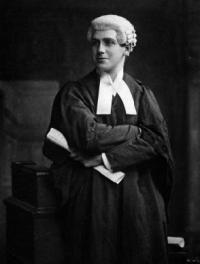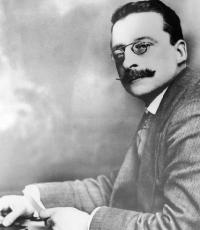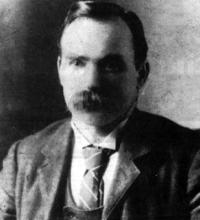Seeking the real Irish revolution
Published in 20th-century / Contemporary History, General, Issue 2 (March/April 2013), Platform, Revolutionary Period 1912-23, Volume 21
‘Desmond Fennell sets guidelines for a narrative that . . . is excessively idealistic in that it underplays the struggle’s material causes, faced in its time in different ways by Tom Kettle, Arthur Griffith and, above all, James Connolly.’
There is, indeed, a necessity to tell the history of the Irish revolution ‘as it was’. Sadly, in his call for this, Desmond Fennell sets guidelines for a narrative that does no more than rationalise the version of the revolution’s history that was accepted for decades after the Civil War, only to dissipate on deeper investigation. It is excessively idealistic in that it underplays the struggle’s material causes, faced in its time in different ways by Tom Kettle, Arthur Griffith and, above all, James Connolly. Moreover, it is elitist in its concentration on the ideas of the revolutionary leadership (Fennell’s ‘group of ideologues’), minimising the rank-and-file whose living conditions made them susceptible to those ideas. Further, even in this ideal sphere, the international aspect is focused on the Catholic Church to the exclusion of other external influences. Finally, the sample of comparative revolutions is too restricted and, in the case of what Fennell calls ‘the Roman revolution’, of dubious validity. Presumably he means the civil wars that led to the ending of the republic; they were struggles within the state power, though they changed its form drastically. More generally, limiting the other comparisons to those of the French, Russian and Irish revolutions excludes a larger number of other successful ones, notably the Dutch, the British, the American, the Italian, the Chinese and the Cuban, not to mention the significant number of revolutionary failures. Accordingly, it is useful to recognise more basic factors dictating the course of revolutions, particularly the Irish.
Popular support
As this writer knows well, no group of ideologues can realise their vision unless supported by a major part of the population of the projected revolutionary area. It need not be an overall majority, any more than most constitutional democratic governments are mandated by such majorities: revolutionary France had to fight internal as well as external enemies, revolutionary Russia an even larger proportion of its fellow countrymen. In Ireland, unionists/Protestants and, in 1918, 20–25% of nationalists opposed Sinn Féin.
It is useful to examine the nature of these last divisions. By and large, the unionist resistance achieved a monolithic character because enough of its members were guaranteed positions by their religion for all to feel threatened by a change of state power that would favour the Catholic majority. Not the least cause of the success of Ulster’s industrialists was their ability to transfer what had been initially rural sectarian divisions into the urban workplaces, keeping their workers divided against themselves and their Protestant employees loyal.
In the nationalist community, though many constitutionalists saw Home Rule (an Irish provincial assembly) as a stepping-stone to a future republic, its core support was composed of propertied Catholics seeking control of the state’s internal organs, perhaps to trim them and certainly to replace what was still a Protestant- and British-dominated senior caste. The proclamation of the Republic was backed by the ‘people of no property’, proletarians, but also by those bourgeois who did not own real estate and who wanted stringent measures to build the economy and by those farmers who had failed to benefit from previous land reforms. Such people had supported the constitutionalists until the suppression of the Easter Rising made it clear both that Home Rule did not mean independence and that, despite the constitutionalists’ insistence, it did not even amount to meaningful ‘home rule’.
 Internationalism
Internationalism
Revolutions tend to occur in conditions of worldwide discontent—intellectual, military and/or insurrectionary. This can be seen in the Irish case. Industrial discontent and then world war created a context for successful revolution. By rising, Connolly was following the Stuttgart resolution passed by the Socialist International, directing its supporters to use war crises ‘to stir up the deepest strata of the people and precipitate the fall of capitalist domination’. It seems possible, too, that his ‘shedding of blood’ for salvation remark may look back to the Paris Commune as much as to the Crucifixion. Later, de Valera gave an endorsement—albeit vague—to the Bolsheviks.
The state
Successful revolution must involve the insurgents scrapping the existing state to replace it with one of their own design. Without that, a programme is reformist, however superficially radical. The old state must be replaced with coercive machinery and general administration that will serve the interests that rose against it. This process can be seen in all successful revolutions. It is the chief difference between the reformist Irish Parliamentary Party and Sinn Féin’s Dáil and Volunteers.
Culture
In revolution, cultural (including religious) issues act in two ways. Like the Reformation, the Enlightenment and the Irish language revival, they can stimulate it. They can be used, also, as in Ireland—the said Gaelicism, as well as Catholicism—to reinforce the new state power against the defenders of the old, as well as against supporters considered a threat to its consolidation. In Ireland this process was more notable than in previous revolutionary states, which could use foreign adventure as an alternative means of neutralising discontent.The Irish revolutionary hegemony was opposed initially by most of the Catholic hierarchy, which supported Home Rule. To prevent its working-class support developing its own programme, it turned to Eoin MacNeill’s interpretations of the Celtic socialist society as being one of class collaboration. Subsequently, the treaty was ratified and its supporters gained the support of a united Catholic hierarchy to create a capitalist Catholic state.
 The split
The split
Despite attempts to maintain cultural unity, the revolutionary leadership is bound to split at some time during its struggle. Those who would conserve their achievements oppose those who would go further (Presbyterians v. Independents, Girondins v. Jacobins, etc.). Each side will be supported by different interest groups within the revolutionary coalition. The Irish split was most obvious in the country areas between those (mainly the larger farmers) who wanted a strong state to complete land purchase and those who needed land division.
Variations in the model
Each revolutionary model has its own peculiarities. In the Irish one, three can be noted. The first is its leaders’ already mentioned dependence on cultural issues. The second concerns its potential left wing and is connected to the third. Within the leadership of the organised workers there was major confusion on the national issue, even while Connolly lived, but more markedly after Connolly. Fearing that the struggle would split their organisations, his comrades kept them from participating fully and consistently. (Their comrades in contemporary Mexico did the same.) There were several general strikes in support of specific democratic demands, but only one was initiated by the Labour leadership. This allowed, more effectively than MacNeill’s green propaganda, Sinn Féin to build a new bourgeois state with little interference from below. In addition, it reinforced the third peculiarity of the revolution.Its bourgeois nature offered nothing to Ulster’s Protestant workers, particularly those in industry, other than a change in their bosses’ religion from the one they held in common to that of their Catholic rivals. They might have mistrusted a genuine nascent workers’ state but it would not have given them the same excuse for effective hostility. As it was, from July 1920 these workers provided what had been lacking in France’s Vendée, becoming shock troops in a sectarian counter-revolution that ensured partition and provoked counter-sectarian responses from its opponents.
![Insurgent workers during the Paris Commune, 1871—‘It seems possible, too, that his [Connolly’s] “shedding of blood” for salvation remark may look back to the Paris Commune as much as to the Crucifixion.](/wp-content/uploads/2013/03/Seeking-the-real-Irish-revolution-4.jpg)
Insurgent workers during the Paris Commune, 1871—‘It seems possible, too, that his [Connolly’s] “shedding of blood” for salvation remark may look back to the Paris Commune as much as to the Crucifixion.
















